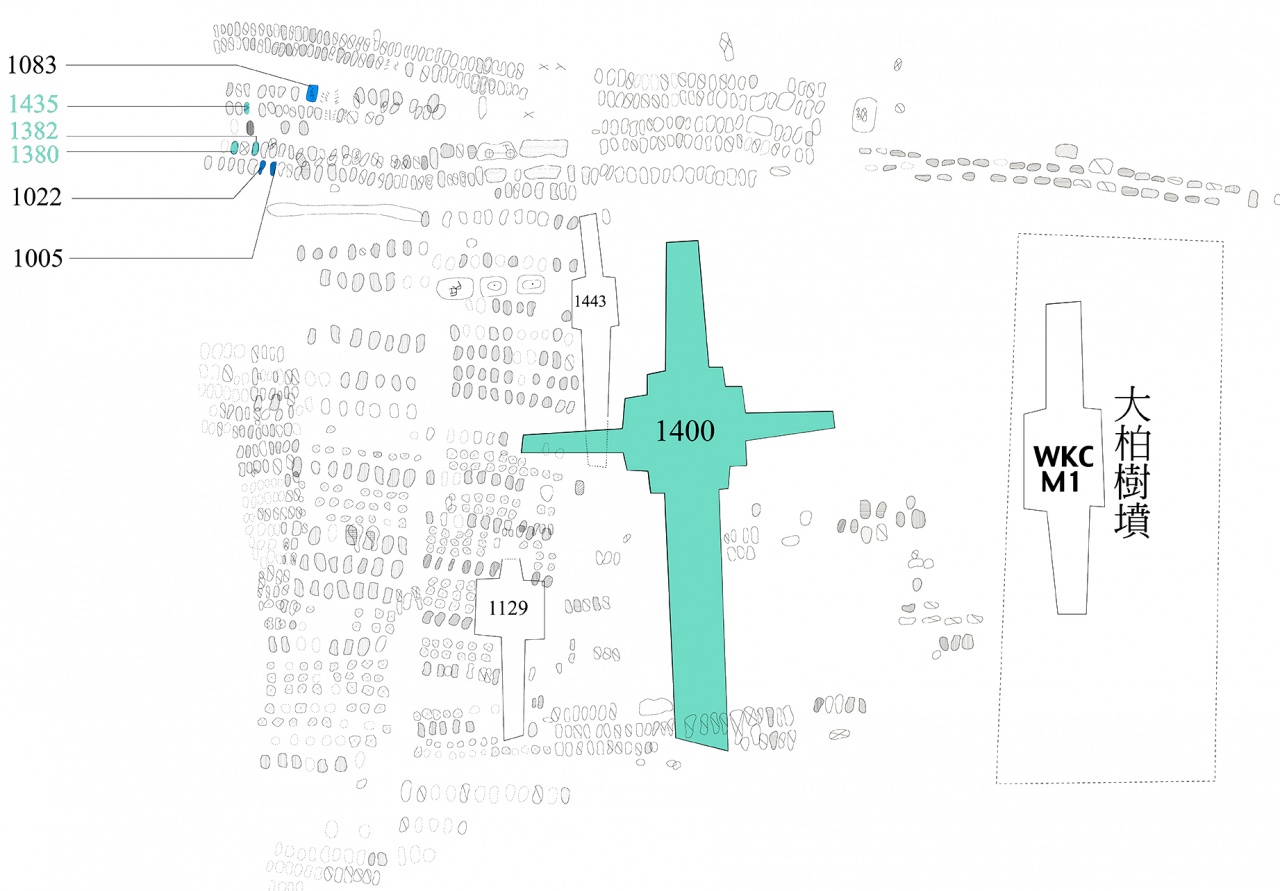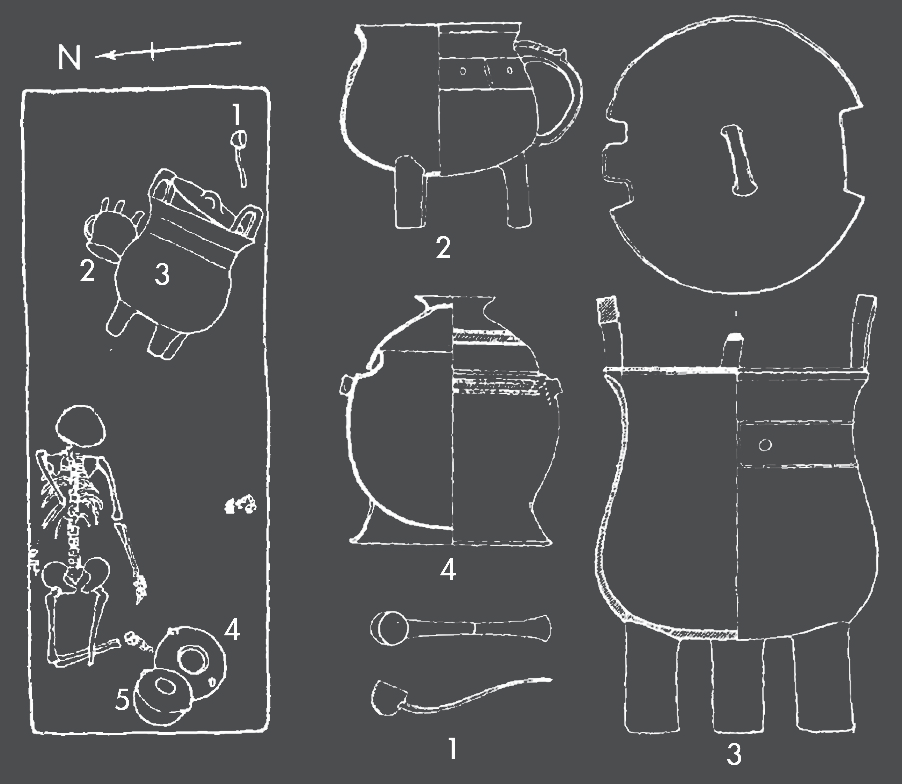The King Demands Hot Water - The “National Treasures” and Washing Implements of the King of the Shang Dynasty
The majority of homes today are equipped with water heaters, and if desiring to wash with hot water, one simply turns on the faucet and watches warm water flow forth. But from 3,200 to 3,300 years ago during the late Shang dynasty, how did the king of the Shang dynasty, the royal family, and members of the aristocracy freshen themselves up? How did they bathe? And did they use hot water? Textual materials are insufficient to answer these questions, and so, we must turn to archaeological findings and materials. At Yinxu (the Ruins of Yin) in Anyang, Honan province, we have discovered four or five linked tombs and sacrificial pits where unearthed artefacts have allowed us to better understand the washing methods of Shang royalty, including the use of hot water.
The exhibition has two core themes of interest: “vessels and implements for the king of Shang to wash” and “vessels and implements for the king of Shang to use hot water.” Regarding the first, a group of related objects discovered from the east ramp of royal tomb M1400, Hsi-pei-kang, Yinxu are on display, including a“Yü Basin,”“Yu Shao Ladle,”“P’an Plate with Dragon Decor,”“Hu Pot with Bow-string Line Decor,”“Bronze Human Mask,”and five “Pottery Skin Scrapers.”And the vessels and implements concerning the use of hot water have been unearthed from sacrificial pits associated with royal tomb M1400, specifically pits M1435, M1380, and M1382. The artefacts on display include a “Ting Cauldron,” “Ting Cauldrons with Single Handle,” “Bronze Spoons,” a “Pou Lidded Stoneware Vase,” and other objects of interest. In some of the sacrificial pits, the remains of human sacrifices have also been discovered, indicating that these vessels and implements for heating water and the servants who attended to the heating processes belonged to the king of the Shang dynasty.
In short, from these artefacts discovered at royal tomb M1400, Hsi-pei-kang, Yinxu and associated sacrificial pits, we are able to apprehend the washing practices and processes of heating water used by the king of the Shang dynasty. A big cauldron was used to boil the water, and single-handled small cauldrons drew the water out to be poured into basins for use. When washing one’s hands or face, a servant poured the water using a ladle and the water then collected in a basin. For bathing, skin scrapers were also used to remove any dirt or dead skin. These processes, from start to finish, were all attended to by servants. In addition, these vessels and implements on display are not just rare to get a glimpse of—whether by us today or even by most living during the Shang dynasty—but four of the artefacts have been registered by the Ministry of Culture as “national treasures” or “significant antiquities,” thus deeming these objects as both washing implements and treasures of the king of the Shang dynasty.

Royal Tomb M1400 and Associated Sacrificial Pits
1. Vessels and Implements for the King of Shang to Wash
Royal tomb M1400 is located in the eastern section of the Hsi-pei-kang cemetery. It is the only large tomb in this section constructed with four ramps. Surrounding M1400 are over one thousand accompanying small graves and sacrificial pits. M1400 had been robbed long ago, but two undisturbed groups of vessels were discovered. The first group, excavated in the western section of the tomb's east ramp, contained bronze vessels for holding water and articles for the toilet, including a p'an-plates, a yü-basin, a shao-ladle, a hu-jar and five pottery pieces for scraping the skin. There was also a bronze human mask, the use of which is unknown. A yü-basin contained a four-character inscription that read "Yü-basin for the small l room within the bedchamber." This inscription and the location of this group of vessels along the eastern side of the outer-coffin chamber indicate that they were probably toilet utensils of the "small room within the bedchamber" of the Shang king.
Bronze Human Mask
Pottery Skin Scrapers
Hu Pot with Bow-string Line Decor
Yü Basin
P’an Plate with Dragon Decor
Yu Shao Ladle
2. Vessels and Implements for the King of Shang to Use Hot Water
At royal tomb M1400 and associated sacrificial pits M1435, M1380, and M1382, a big cauldron that bulges slightly, single-handled small cauldrons, bronze spoons, lidded stoneware vase, and human remains have all been discovered. The artefacts found at these three pits are similar those unearthed in 1976 at sacrificial pit M229 near Wuguancun in Anyang. From our observations and joint efforts, we can now deduce that the warming cauldron, single-handled small cauldrons, spoons, and a lidded stoneware vase comprise a set of implements to make and use hot water. Moreover, the human remains are of the servants who attended to the processes of heating water. A warming cauldron was used to boil the water, and single-handled small cauldrons drew the water out. A lidded stoneware vase then held the water as bronze spoons ladled the water out for drinking or washing.
Ting CauldronTing Cauldrons with Single Handle
Ting Cauldron with Single Handle
Pou Lidded Stoneware Vase
Bronze Spoon
Bronze Spoon and Jade Dagger-axe

Drawn Representations of Sacrificial Pit M229 near Wuguancun and Discovered Implements
2.1 Sacrificial Pit M1435
2.2 Sacrificial Pits M1380 and M1382
Sacrificial pit M1380 is rectangular and measures 1.92m by 0.8m. Remains of two humans slightly leaning over have been discovered, and the skeletal remains are layered on top of one another. A single-handled small cauldron with animal motifs, a lidded stoneware vase, and a bronze spoon have also been unearthed. Sacrificial pit M1382 is rectangular and measures 2.15m by 0.75m. Remains of two humans slightly leaning over have been discovered. A jade dagger-axe has been found on one of the persons, and in addition, a bronze spoon has been unearthed at the pit.
























